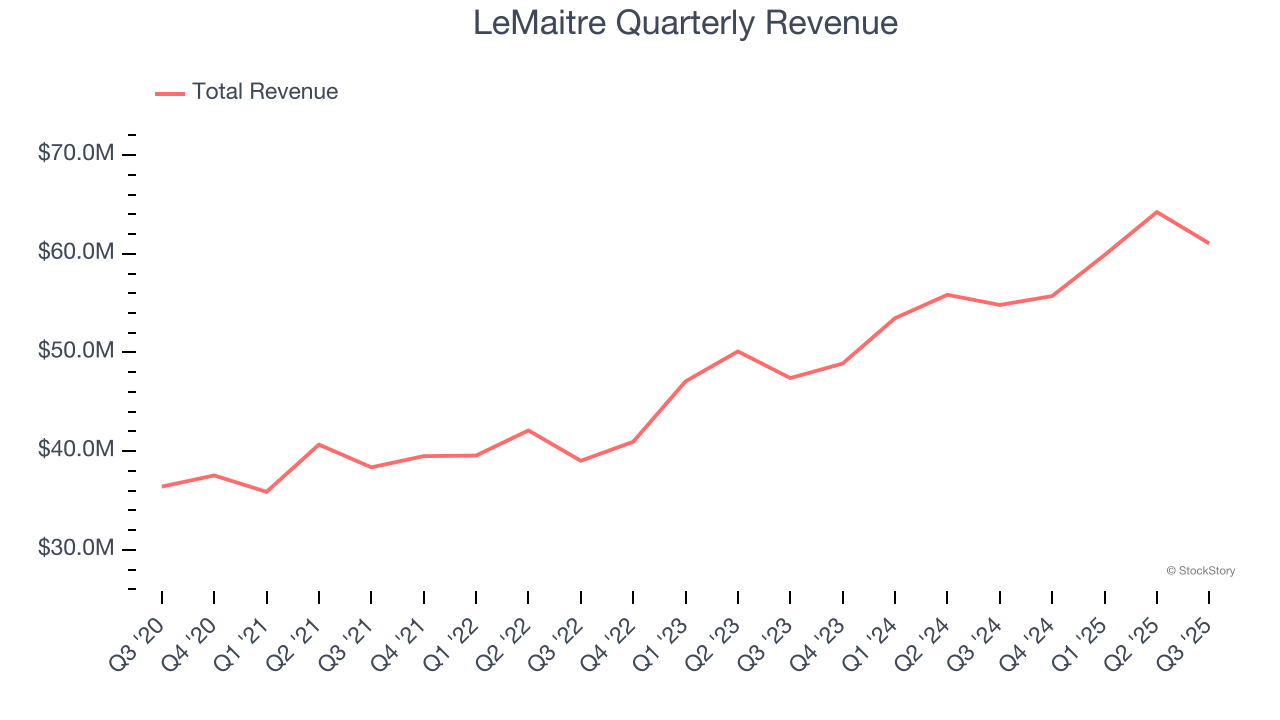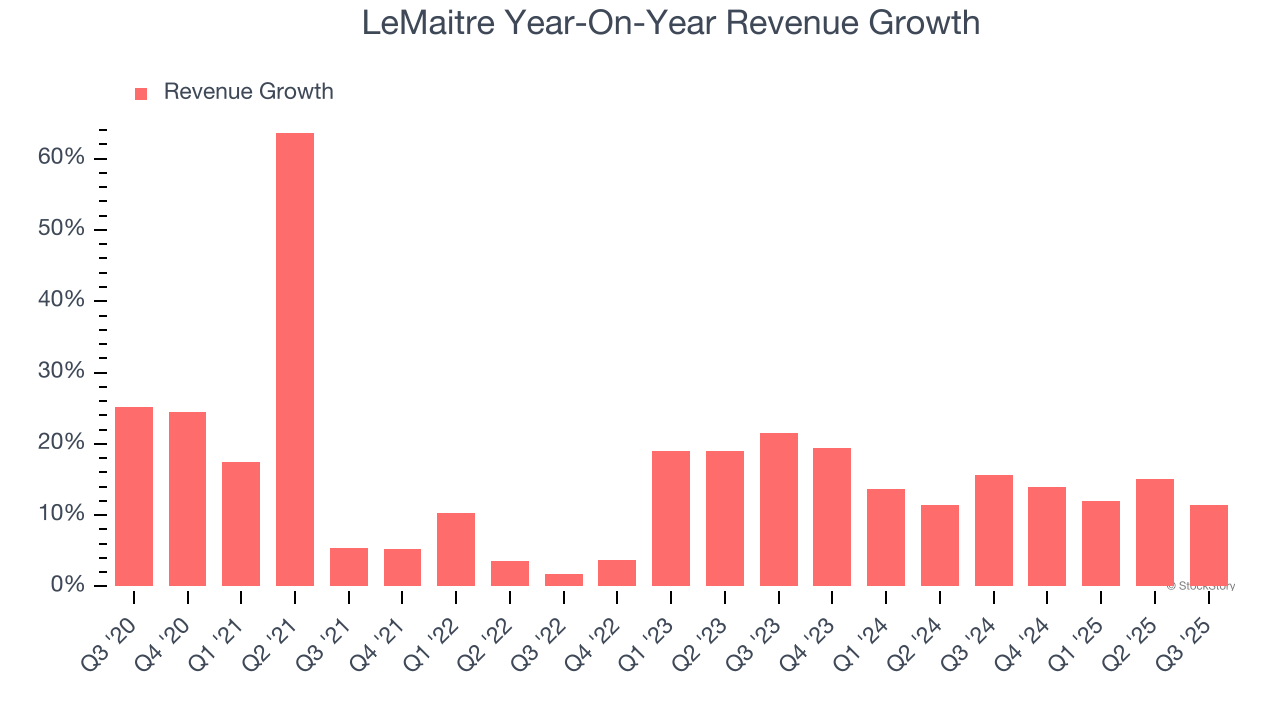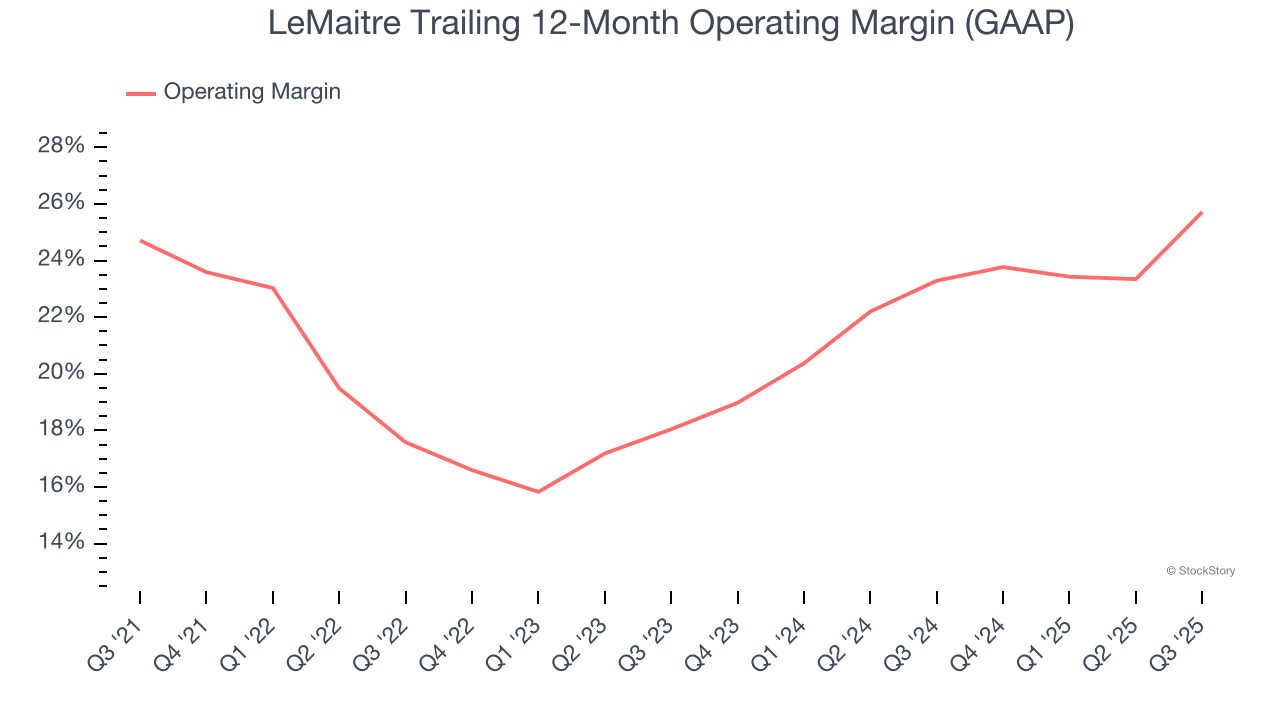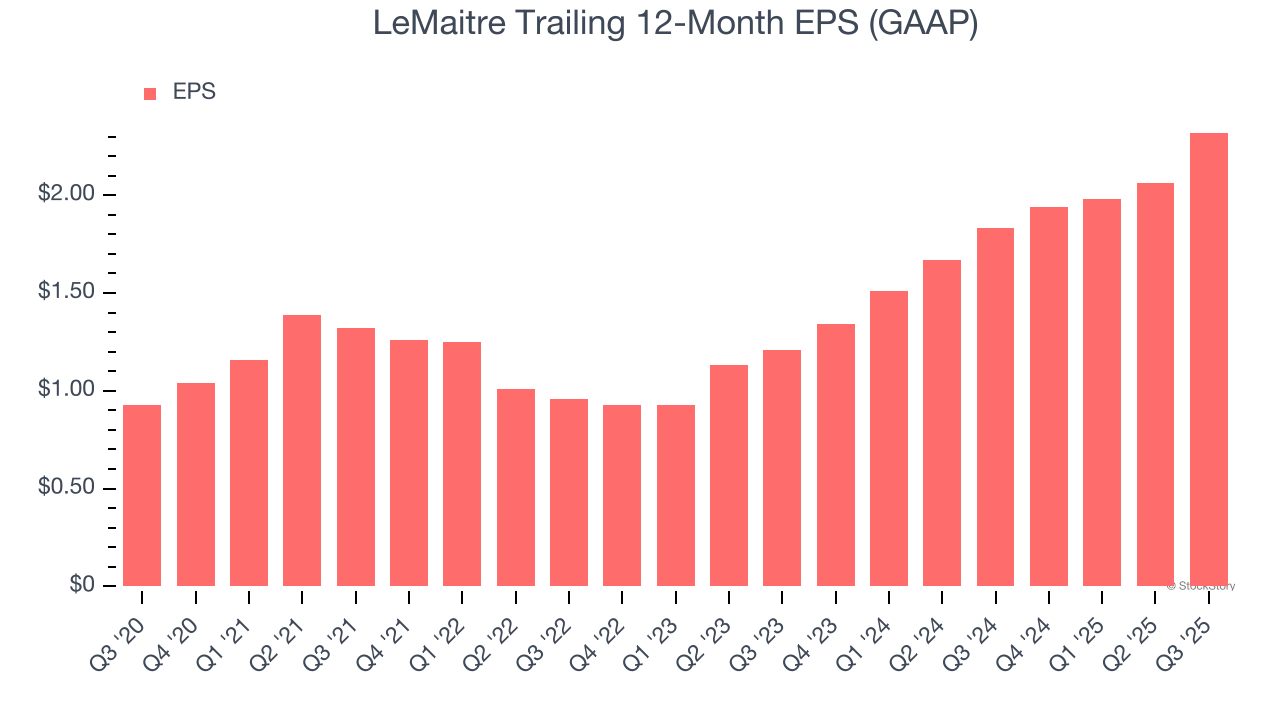
Medical device company LeMaitre Vascular (NASDAQ: LMAT) fell short of the markets revenue expectations in Q3 CY2025, but sales rose 11.4% year on year to $61.05 million. Next quarter’s revenue guidance of $62.8 million underwhelmed, coming in 2.9% below analysts’ estimates. Its GAAP profit of $0.75 per share was 31.5% above analysts’ consensus estimates.
Is now the time to buy LeMaitre? Find out by accessing our full research report, it’s free for active Edge members.
LeMaitre (LMAT) Q3 CY2025 Highlights:
- Revenue: $61.05 million vs analyst estimates of $62.3 million (11.4% year-on-year growth, 2% miss)
- EPS (GAAP): $0.75 vs analyst estimates of $0.57 (31.5% beat)
- Adjusted EBITDA: $19.24 million vs analyst estimates of $17.72 million (31.5% margin, 8.6% beat)
- Revenue Guidance for Q4 CY2025 is $62.8 million at the midpoint, below analyst estimates of $64.69 million
- EPS (GAAP) guidance for the full year is $2.51 at the midpoint, beating analyst estimates by 9.8%
- Operating Margin: 33.3%, up from 24% in the same quarter last year
- Organic Revenue rose 12% year on year vs analyst estimates of 14.8% growth (281.7 basis point miss)
- Market Capitalization: $1.95 billion
Company Overview
Founded in 1983 and named after a pioneering vascular surgeon, LeMaitre Vascular (NASDAQGM:LMAT) develops and manufactures specialized medical devices used by vascular surgeons to treat peripheral vascular disease and other circulatory conditions.
Revenue Growth
Reviewing a company’s long-term sales performance reveals insights into its quality. Any business can have short-term success, but a top-tier one grows for years. Over the last five years, LeMaitre grew its sales at a solid 14.6% compounded annual growth rate. Its growth beat the average healthcare company and shows its offerings resonate with customers.

We at StockStory place the most emphasis on long-term growth, but within healthcare, a half-decade historical view may miss recent innovations or disruptive industry trends. LeMaitre’s annualized revenue growth of 13.9% over the last two years aligns with its five-year trend, suggesting its demand was predictably strong. 
We can better understand the company’s sales dynamics by analyzing its organic revenue, which strips out one-time events like acquisitions and currency fluctuations that don’t accurately reflect its fundamentals. Over the last two years, LeMaitre’s organic revenue averaged 13.4% year-on-year growth. Because this number aligns with its two-year revenue growth, we can see the company’s core operations (not acquisitions and divestitures) drove most of its results. 
This quarter, LeMaitre’s revenue grew by 11.4% year on year to $61.05 million but fell short of Wall Street’s estimates. Company management is currently guiding for a 12.7% year-on-year increase in sales next quarter.
Looking further ahead, sell-side analysts expect revenue to grow 11.3% over the next 12 months, a slight deceleration versus the last two years. Despite the slowdown, this projection is admirable and implies the market is forecasting success for its products and services.
The 1999 book Gorilla Game predicted Microsoft and Apple would dominate tech before it happened. Its thesis? Identify the platform winners early. Today, enterprise software companies embedding generative AI are becoming the new gorillas. a profitable, fast-growing enterprise software stock that is already riding the automation wave and looking to catch the generative AI next.
Operating Margin
Operating margin is one of the best measures of profitability because it tells us how much money a company takes home after subtracting all core expenses, like marketing and R&D.
LeMaitre has been an efficient company over the last five years. It was one of the more profitable businesses in the healthcare sector, boasting an average operating margin of 22.1%.
Analyzing the trend in its profitability, LeMaitre’s operating margin rose by 1 percentage points over the last five years, as its sales growth gave it operating leverage. This performance was mostly driven by its recent improvements as the company’s margin has increased by 7.7 percentage points on a two-year basis.

In Q3, LeMaitre generated an operating margin profit margin of 33.3%, up 9.3 percentage points year on year. This increase was a welcome development and shows it was more efficient.
Earnings Per Share
We track the long-term change in earnings per share (EPS) for the same reason as long-term revenue growth. Compared to revenue, however, EPS highlights whether a company’s growth is profitable.
LeMaitre’s EPS grew at an astounding 20.1% compounded annual growth rate over the last five years, higher than its 14.6% annualized revenue growth. This tells us the company became more profitable on a per-share basis as it expanded.

We can take a deeper look into LeMaitre’s earnings quality to better understand the drivers of its performance. As we mentioned earlier, LeMaitre’s operating margin expanded by 1 percentage points over the last five years. This was the most relevant factor (aside from the revenue impact) behind its higher earnings; interest expenses and taxes can also affect EPS but don’t tell us as much about a company’s fundamentals.
In Q3, LeMaitre reported EPS of $0.75, up from $0.49 in the same quarter last year. This print easily cleared analysts’ estimates, and shareholders should be content with the results. Over the next 12 months, Wall Street expects LeMaitre’s full-year EPS of $2.32 to grow 7.6%.
Key Takeaways from LeMaitre’s Q3 Results
It was good to see LeMaitre beat analysts’ EPS expectations this quarter. We were also excited its full-year EPS guidance outperformed Wall Street’s estimates by a wide margin. On the other hand, its revenue guidance for next quarter missed and its revenue fell short of Wall Street’s estimates. Zooming out, we think this was a mixed quarter. The stock remained flat at $85.60 immediately following the results.
Should you buy the stock or not? If you’re making that decision, you should consider the bigger picture of valuation, business qualities, as well as the latest earnings. We cover that in our actionable full research report which you can read here, it’s free for active Edge members.





